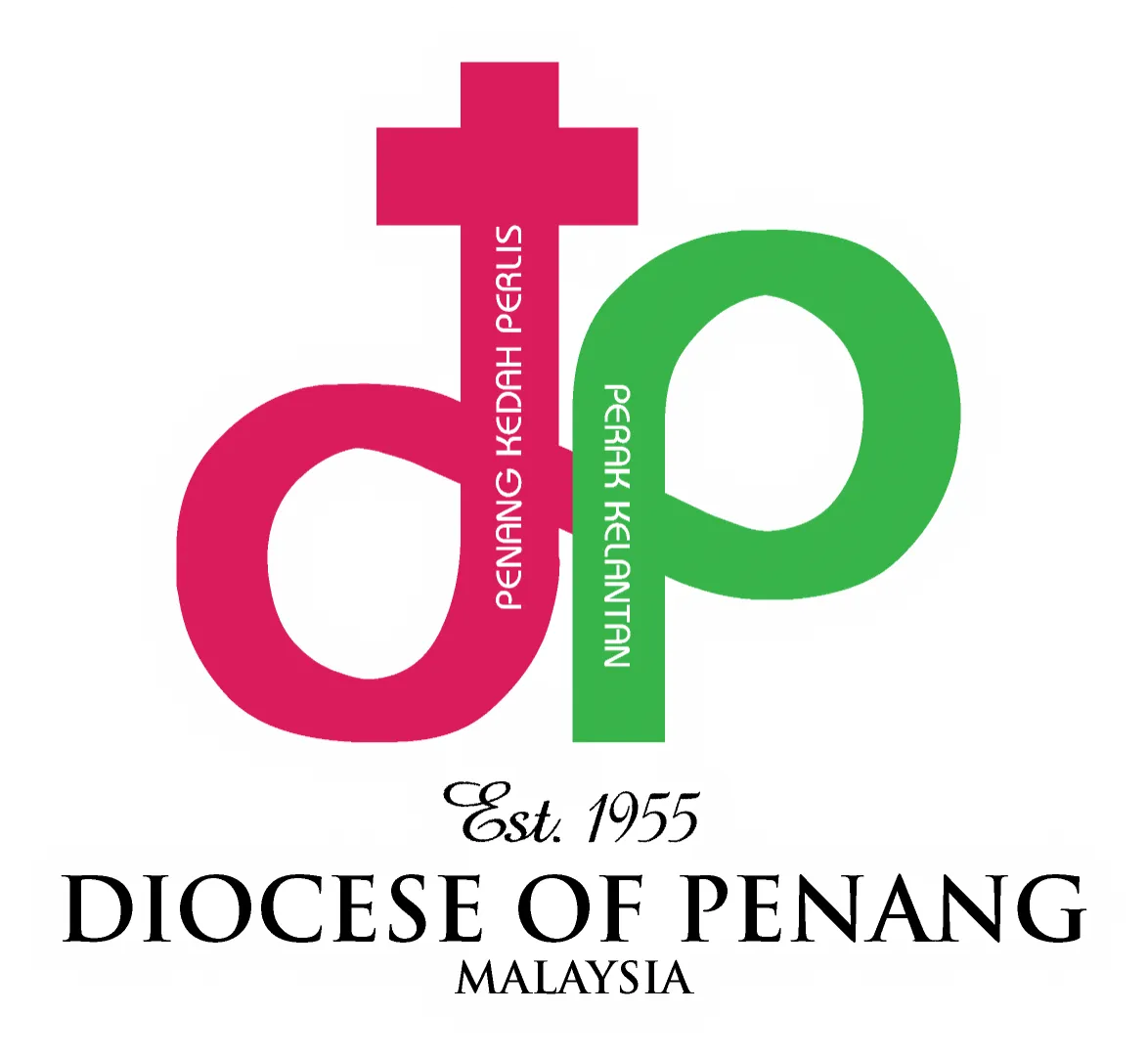CONTACT
Though the Portuguese missionaries had set foot in Malacca as early as 1511, their activities remained largely isolated from the rest of Malaya. The spread of Catholicism therefore took place from the northern kingdom of Thailand.
By 1662, the missionaries of the Paris Foreign Missions Society (MEP) had established themselves in Ayuthia, Thailand with the hope of making it the base for this region, since the Thai king at that time practiced religious tolerance. However, the war with Burma and the change of Thai dynasty proved unfavorable to the Catholics and they faced persecution and expulsion. They took refuge along the west coast of the Isthmus of Kra, Phuket and Kedah. This led to the first Catholic community taking shape in 1781, in present day Malaya, at Port Quedah (Kuala Kedah), which was a province that kept changing hands between Thai and Malay rulers, The community which numbered about 80 was made up of Portuguese men married to Burmese or Thai women. The Sultan of Kedah gave them a house which they transformed into a church: the Church of St. Michael, with Fr. Garnault as their first resident priest.
Meanwhile, the Sultan of Kedah, with the hope of gaining protection against Thai attacks, ceded Penang Island to the (British) East India Company under Captain Francis Light, who was looking for a safe harbour and trading post. (fig 1)
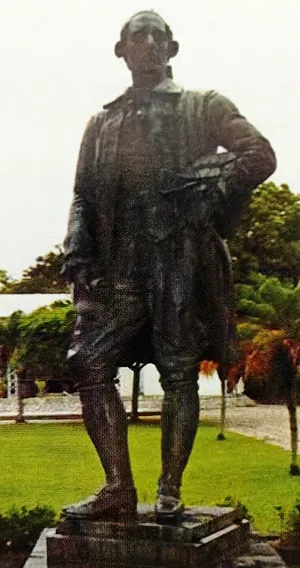
In 1786, Francis Light sent a ship to Kuala Kedah to fetch his Catholic friends including Fr. Garnault to help him in the administration and development of the island. Fr. Garnault built a church on a piece of land given by Francis Light and named it the Church of the Assumption. He was the first parish priest of the Assumption.
Wish the migration of most of the Catholics to Penang, the Parish of St. Michael at Kuala Kedah dwindled to a few members. By 1821, the church itself was destroyed during the invasion by Thailand. The small Catholic communities in those areas were ministered by visiting priests from the Church of the Assumption. In 1920, Fr. Louis Duvelle from the Assumption Church built a small chapel at Alor Setar and dedicated it to St. Michael, in memory of the first Catholic Church at Kuala Kedah. ( chapel in fig 2 and Fr. Duvelle in fig 3) The present Church of St. Michael is a reminder of that broken history.
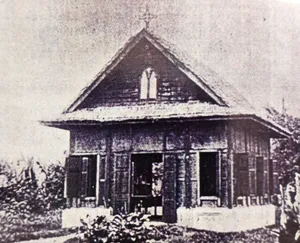
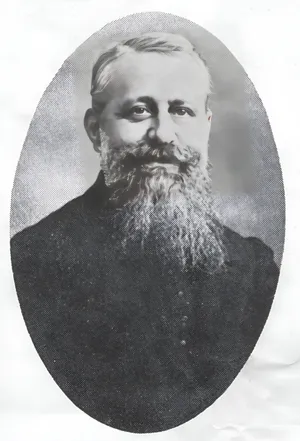
In 1808 the major seminary, known as College General which was originally established in Ayuthia in 1665, was finally relocated to Pulau Tikus, as Penang was found to be peaceful and geographically the most suitable location. Three years later Fr. John Pasqual and his flock in Phuket escaped from the invading Burmese and settled down at Pulau Tikus. They used the chapel at College General as their parish church. This was the Parish of the Immaculate Conception and they built their own chapel nearby in 1835.
In 1888, Province Wellesely was also ceded to the British. Eventually the whole of Malaya, including Malacca and Singapore came under British rule. About that time, owing to the grave economic difficulties in China, there was an influx of Chinese seeking job opportunities in Malaya. Many of them worked in the tin mines in Larut and the Kinta Valley. As the local population was small, the British recruited labourers from India and Ceylon to work in the plantations during the rubber boom. Thus the population of the Indians and Chinese grew rapidly and villages and towns sprouted everywhere.
The MEP missionaries, with encouragement from Bishop J.B. Boucho, learnt the local languages and they began to divide their work and direct their efforts according to the racial composition of the parish communities. Thus, they spread out into the peninsular in all directions with their base in Penang.
Fr. Francois Hab founded the first Indian parish, the Parish of St. Francis Xavier in 1857, next to the Catholic cemetery near Penang Road. He then sent his assistant Fr. Rene Fee along with a few Indian parishioners to minister to the Indian communities in Bagan Serai, Nibong Tebal and Telok Anson.
Other MEP missionaries who learnt Tamil and continued the work of Fr. Hab and Fr. Rene were Fr. Riboud, Fr. Diridollou, Fr. Lucien Catel and later by local Indian priests, one of whom was Msgr. Ignatius John Aloysius.
The first Chinese parish was in Balik Pulau, the Parish of the Holy Name of Jesus, established as a dependency of the Immaculate Conception, in 1854. It catered to the Chinese farmers and shopkeepers with Fr. Ducotey as the parish priest.
The Chinese Catholics of Georgetown had no proper place to worship until 1888, when Fr. Emile Barillon erected a small church and named it Church of Our Lady of Sorrows.
Msgr. J. B. Boucho had been visiting and evangelising small Chinese communities on the island of Batu Kawan, Matang Tinggi and Machang Buboh ever since he was posted to the Church of the Assumption in 1824. Soon many others followed his foot-steps. One of them was Fr. J. F. Allard. He took up residence in Matang Tinggi and later at Bukit Mertajam, from where he made his rounds. It was Fr. Adolphe Couellan who had a devotion for St. Anne while studying in Brittany. He was one of the visiting priests and he built a chapel at Bukit Mertajam and dedicated it to St. Anne in 1856. The parish itself was established ten years earlier. Today, it has grown to be a pilgrim church and attracts large crowds from all over Malaysia, Singapore and Thailand. During the feast day held in July, a quarter of a million pilgrims participate in the services.
Fr. Allard established a Chinese parish in Klian Pau, Taiping in 1875. He sent his assistant Fr. Emile Mariette to minister to the Chinese communities at Batu Gajah. Fr. Emile Barillon, successor to Fr. Emile Mariette founded the parish of St. Michael at Ipoh, in 1890.
The early churches were simple Malay type houses of wood and attap. As the parishes grew into big communities, new church buildings had to be constructed on bigger piece of land, to replace the original ones.
In the late nineteen fifties the Jesuit, Redemptorist, Franciscan and Capuchin priests came and contributed in missionary work by preaching and giving retreats. They also set up seminaries for local vocations.
Bishop J. B. Boucho was keen to promote education, so he opened a school known as 'the Catholic Free School' with Malay as the medium of instruction. Through his encouragement and the untiring efforts and vision of Fr. Jean Christian Schools (La Salle Brothers) and the Sisters of St. Maur Marie Beurel, MEP in Singapore, the Brothers of Christian Schools (La Salle Brothers) and the Sisters of St. Maur (Sisters of Holy Infant Jesus) of France were persuaded to come here and set up schools in 1852.
Three brothers under the leadership of Br. Lothaire were assigned to the 'Catholic Free School' which they renamed as St. Xavier's Institution, to honour the Apostle of the East. The medium of instruction was changed to English. About fifty years after their arrival they began to set up a network of schools in various towns. By 1965 there were 20 schools, primary and secondary inclusive, within the diocese alone. (fig 4 - John Baptist de La Salle founder of the Community of La Salle Brothers and patron of teachers), and (fig 5)

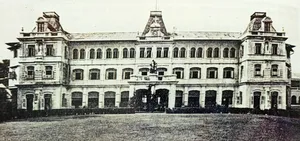
Three Sisters of the Infant Jesus started the Light Street Convent at the same time as the La Salle Brothers. Four months later Mother Mathilde was sent to become the first Superior to help in the management. Side by side, they also set up an orphanage. By 1965, there were 33 Infant Jesus convents (primary & secondary) in the diocese. (fig 6)

There were brothers and sisters of other religious orders who set up a wide range of establishments and worked tirelessly doing charitable works. Later a few of the establishments had to close down due to shortage of staff.
The Marist Brothers set up schools in Ipoh and Bukit Mertajam. The Canossian Sisters (FDCC) set up a kindergarten at Sungai Siput and to this day maintain contact with the youth. The Brothers of Mercy (FMMA)
set up clinics and a hospital in Ipoh. The Institute of the Sisters of the Foreign Missions (ISME) or 'Grey Sisters' worked in clinic and helped at College General.
The Sisters of Franciscan Missionaries of the Divine Motherhood (FMDM) opened the Lady's Hospital in Ipoh in 1965. They also established the Mount Miriam Hospital in Penang, in 1976, which later became fully equipped to be a Cancer Hospital. (fig 7)
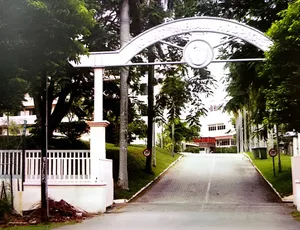
The Little Sisters of the Poor set up a home for the aged at Penang and one at Ipoh. (fig 8)
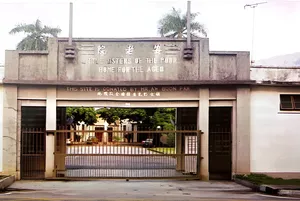
During the depression of the 1930s, the demand for rubber and tin went down and many people lost their jobs. The British imposed controls on the migration of workers from China. Many of the French missionaries had to go back to France during World War I (1914 - 1918). This may have been a blessing in disguise, as the number of Asian seminarians at the College General during this time increased. Between 1940 and 1950 the persecution in China forced many seminarians there to flee and they continued their studies at College General, Penang. After their studies they were unable to return to their homeland and so they stayed back to serve in Malaya and the neighboring countries. Thus, gradually our locally trained priests took over the pastoral duties and missionary activities of the foreign missionaries.
During the Japanese occupation, bombing caused serious disruption to the functioning of the churches and Catholic institutions all over the country. Georgetown was badly affected and many people ran away to the suburbs and to Province Wellesely.
Since 1888, the churches in Malaya and Singapore were under the See of Malacca with the bishop residing at the Cathedral of the Good Shepherd, Singapore. In 1955 the Church in Malaya and Singapore was divided into three dioceses through a decree from His Holiness, Pope Pius XII. The new Diocese of Penang was erected, with the Church of the Assumption as its See and Episcopal Cathedral. Bishop Francis Chan was installed as the first bishop of the new diocese, with jurisdiction over the states of Perlis, Kedah, Kelantan, Perak, Penang and Province Wellesely, covering a land area of 46,853 square Kilometers. (fig 9)

The Catholics who had dispersed into the suburbs of Georgetown and Province Wellesely during the Japanese occupation remined put. New townships and large housing estates began sprouting all over. Soon after his Installation, Bishop Chan began to address the problems due to demographic changes by approving the setting up of new parishes.
The Aggiornamento was held in 1976 at College General, following the Vatican Council to reflect and to explain to the local priests the requirements of the Council. The core need was that parishes should become communion of Basic Ecclesial Communities. The four basic needs were unity, formation, ecumenical and inter-religious dialogue and integral human development. Brother Labelle from the Movement of Better World, later introduced the New Image of the Parish (NIP) program.
In 1983, the clergy was given an option for this new program and it was accepted. This program eventually evolved into the Basic Ecclesial Community (BEC) where the church was brought to the home and the neighborhood. The Word of God was beginning to be better understood. The Catholic way of thinking was radically changed through formation at all levels. From the liturgy down to every possible Catholic activity change was experienced, bringing a breath of fresh air. The Colonial outlook of our local church gradually disappeared.
Lay people, both male and female began to actively participate in all areas of the liturgy. This helped to relieve the priests to a great extent later on, when the number of priests started shrinking, as fewer men opted for the priesthood.
In 1967 when Bishop Francis Chan passed away, Fr. Gregory Yong who was lecturing at College General succeeded him the following year. When Bishop Gregory Yong was appointed Archbishop of Singapore in 1977, Bishop Soter Fernandez took over until 1983. Bishop Antony Selvanayagam, Auxiliary Bishop of Kuala Lumpur since 1980, was then installed as the fourth Bishop of Penang on 8 November 1983.
By the early nineties the number of parishes in the diocese had increased to 34. On the other hand, the number of priests was shrinking and it became difficult to administer all the churches effectively. Therefore, on the Island, the Parishes of Our Lady of Sorrows, St. John Britto, St. Francis Xavier, including the Assumption were amalgamated to become the City Parish. Likewise, in Taiping, the Church of St. Louis and the Church of Our Lady of the Sacred Heart were amalgamated to become the Taiping Catholic Church. The number of parishes was brought down to 28.
This was also in line with the classification of churches as 'territorial'. Previously churches were set up according to the linguistic pattern of the area. However, in the territorial concept a church is open to all members living within the parish territory irrespective of their language or race.
As the diocese grew and matured, the number of activities increased. Today the various organisations, commissions and committees of the diocese have their office in The Penang Diocesan Centre, at Macalister Road, Penang, which was opened in March 2001. This is where the bishop has his office and where the administration of the diocese is carried out. The diocesan archive is also located here.
By now the Cathedral of the Assumption had long lost its ability to cope with the many changes and demands within the diocese. So Bishop Antony made an urgent appeal to the Apostolic See, that the Episcopal Cathedral be transferred from the Church of the Assumption to the Church of the Holy Spirit. The Parish of the Holy Spirit had been established in 1958 by Fr. M. Surmon. The Church was built ten years later at a new housing estate along Green Lane. The multi-racial parish grew from the initial 1,000 to nearly 6,000 within 44 years, when it was well poised to take over this new role. In 2000, when Fr. Stephen Liew took over as parish priest he was appointed Vicar General. Subsequently the Apostolic See gave its consent to the petition by the bishop and the church was elevated to the status of Cathedral. The dedication ceremony of the new cathedral was held on 20 January 2003.
About 224 years back, religious persecution brought the Word of God right into our own territory, at Kuala Kedah. It didn't stop there. Instead, Penang became the base for the setting up of parishes, schools and other Catholic establishments in various parts of the country, as well as the region. In this respect, the College General has been a beacon and a refuge for the many great souls who offered themselves in their service to God and mankind. Undoubtedly its close proximity helped the diocese to recruit more workers for the vineyard. (The College General remains supra-diocesan.)
Our own local priests who took over the struggle from the foreign missionaries have brought this diocese to maturity and we are able to look back with awe and pride, as we celebrate the Golden Jubilee of the Diocese of Penang and the Silver Jubilee of Bishop Antony Selvanayagam.
Compiled and written by Joseph Raj

